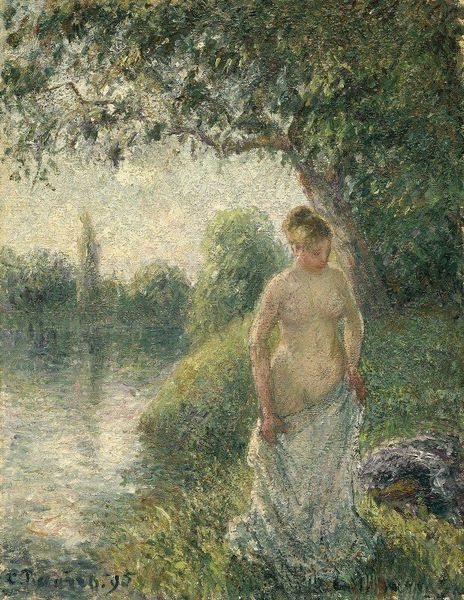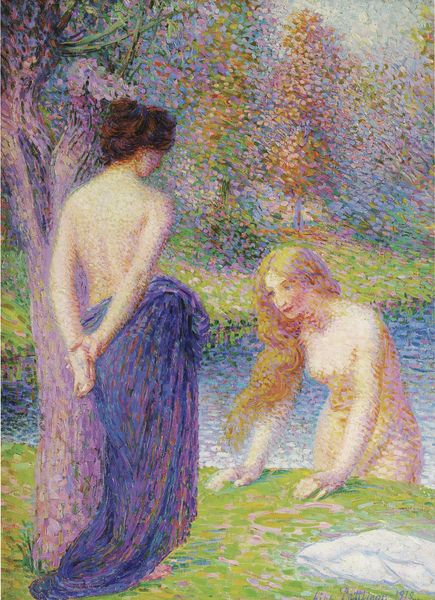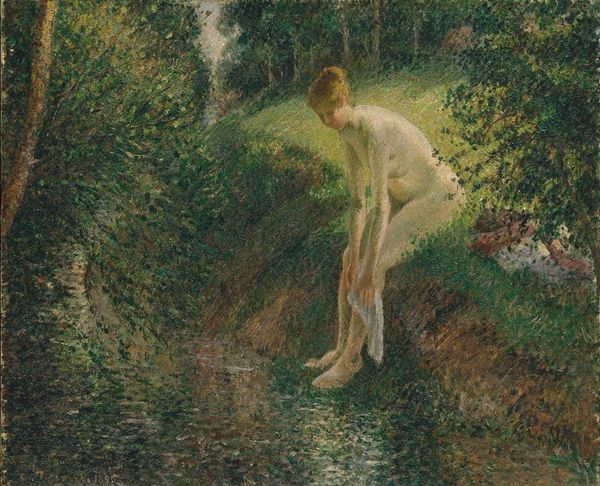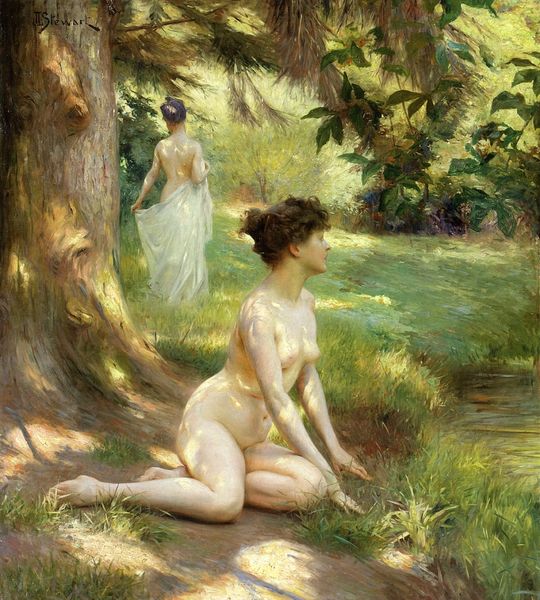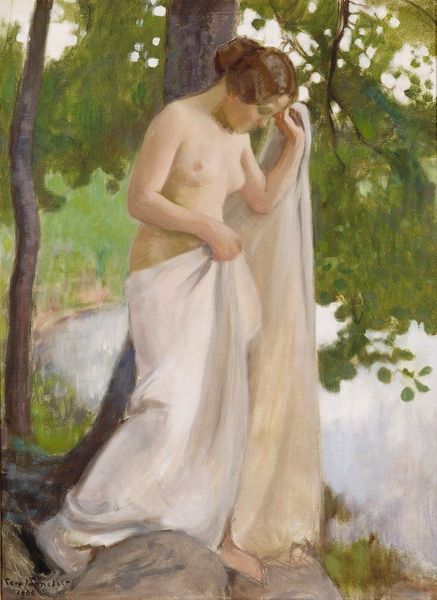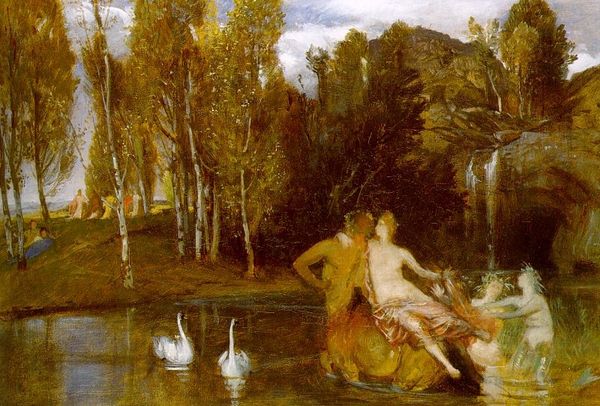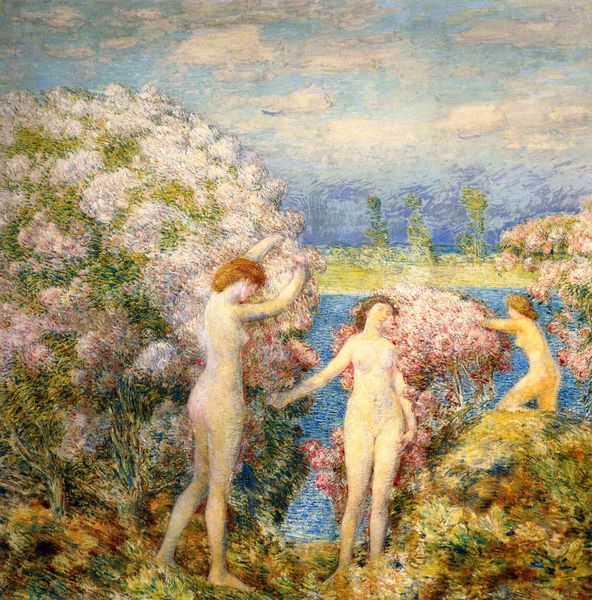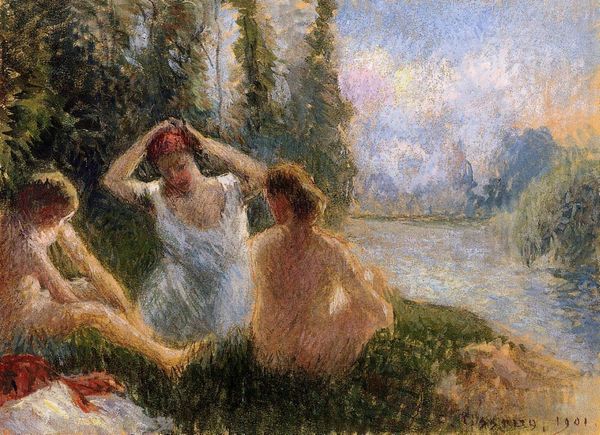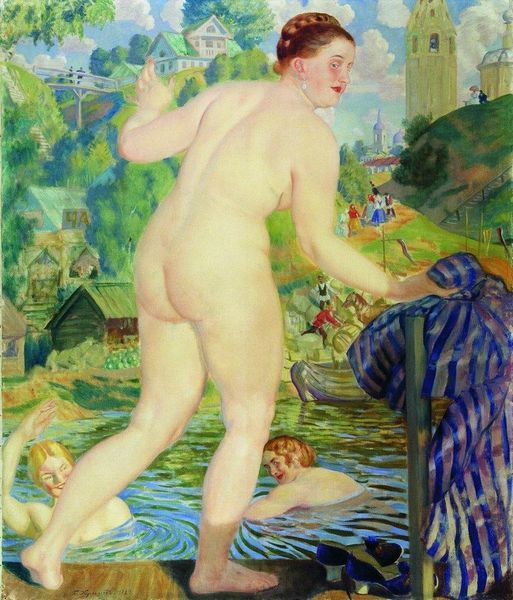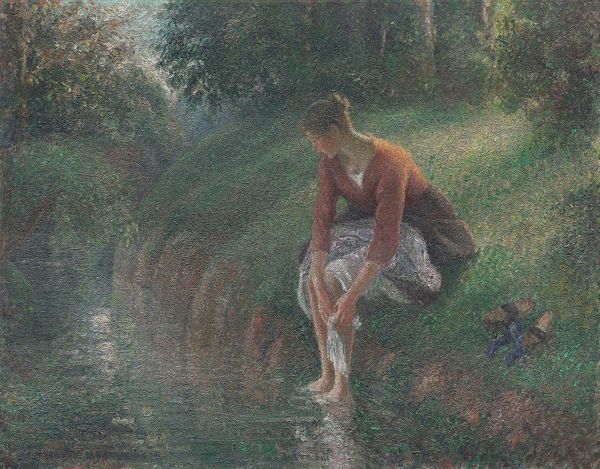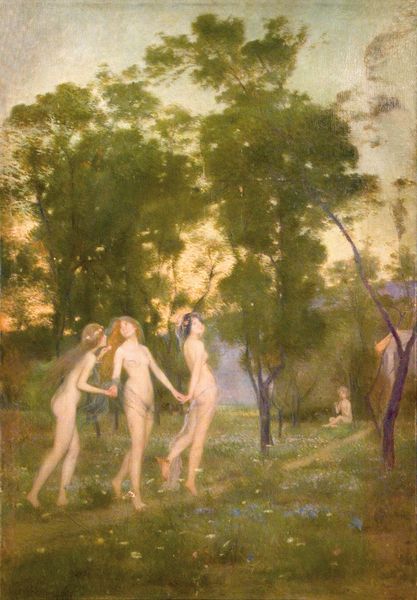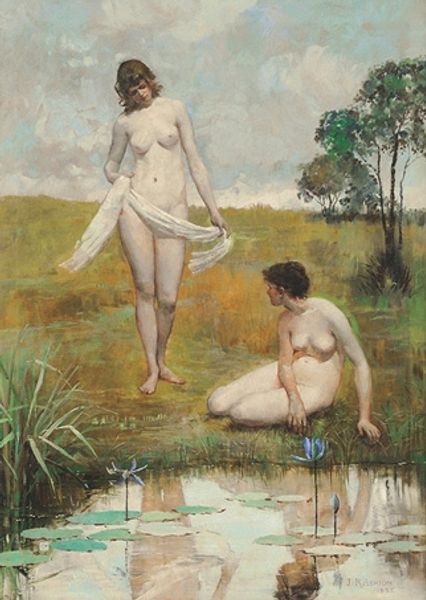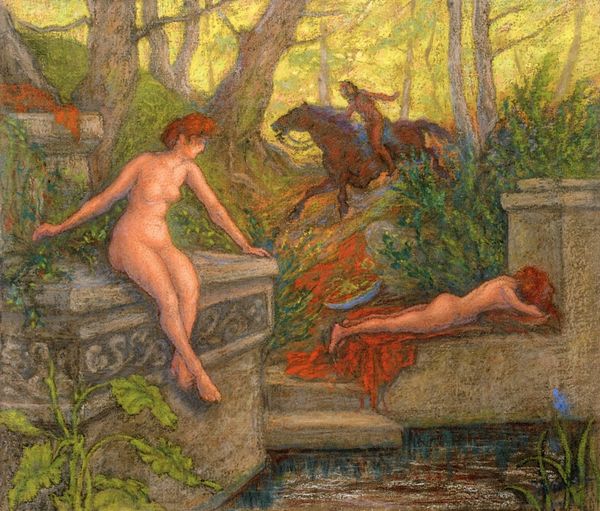
Copyright: Public domain
Editor: Here we have Camille Pissarro’s “Bathers,” an oil painting from 1896. It feels…intimate, almost like a glimpse into a private moment. The brushstrokes are so delicate. What strikes you most about it? Curator: The painting immediately makes me think about the evolving role of women in late 19th-century art and society. Pissarro is taking on a classical theme of female nudes in nature. Do you think there's anything provocative about presenting working-class women as nudes in a landscape at that time? Editor: That’s a really interesting point. I hadn't considered the class aspect so directly, but it's clear these aren't idealized goddesses from mythology. They’re…earthier, more real. Curator: Exactly! The figures invite us to ponder the growing Realist movement and its effect on traditional artistic conventions. Pissarro depicts the landscape with equal care, using his signature Impressionistic style. Consider how the setting isn’t just a backdrop, but almost a participant in the scene. Does the natural, almost rugged, environment change the way the viewer perceives their femininity, compared to, say, a salon painting? Editor: It makes them feel less posed, less like objects of admiration and more like women simply existing in nature. It definitely challenges those typical salon portrayals. Curator: Yes, and in doing so, what does this work do to democratize art viewing practices? In this way Pissarro is changing whose lives can be represented, and how! Editor: This conversation has shifted my perspective. I walked in seeing a peaceful scene and I'm walking away thinking about how this artist engages in conversations about representation, the place of the body, and societal shifts in values through the painting itself. Thank you! Curator: Absolutely! That intersection of social context and artistic representation is what makes art history so rewarding, wouldn’t you say?
Comments
No comments
Be the first to comment and join the conversation on the ultimate creative platform.
